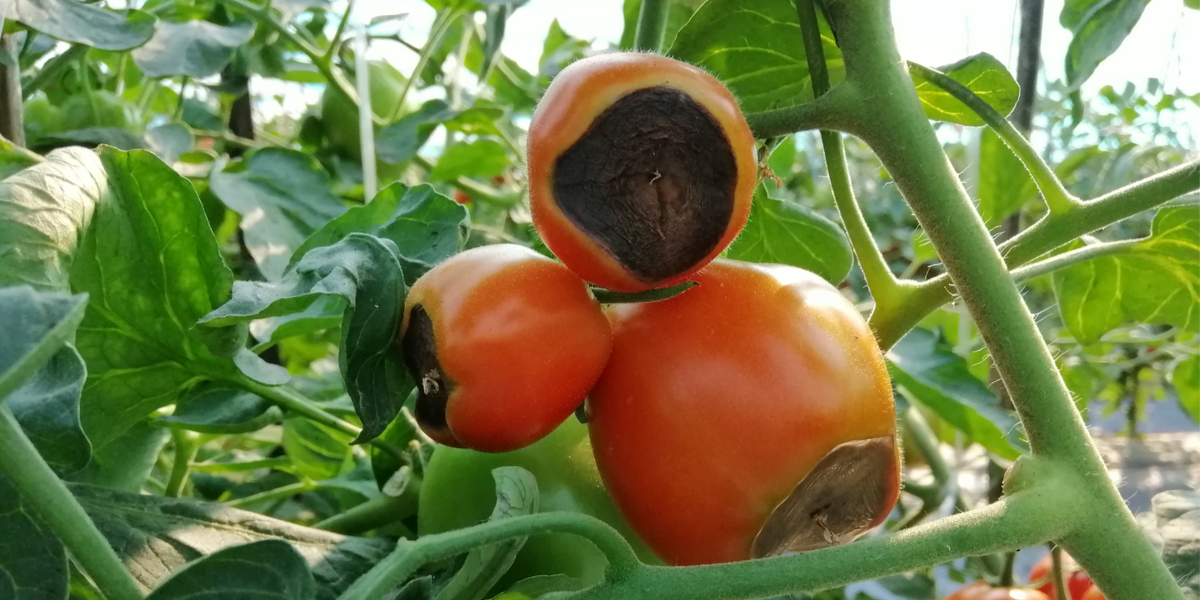Rotten tomatoes star in garden horror show

COLUMBIA, Mo. — Your beautiful tomato plant is setting fruit and soon has nice green tomatoes. Then, to your horror, a dark sunken spot shows up at the bottom of the fruit.
You might think an insect or disease has attacked your plant, but such is not the case. Old-timers referred to the problem as “sooty snoot.” Today, it is called blossom-end rot. It is a physiological disorder caused by a calcium imbalance.
In a press release, David Trinklein, horticulture specialist for University of Missouri Extension, said “Plant cells have rigid cell walls. To build those walls the plant needs calcium. Calcium is to cell walls what the mortar is to a brick wall; it gives it structural strength.”
After being taken up by the roots, calcium moves through the plant in the vascular tissue. “This requires water,” Trinklein said. “If there isn’t enough water to carry the calcium, or enough calcium to be carried by the water, then the mineral cannot reach the distal (blossom) end of the fruit where cells are dividing actively and large amounts of calcium are needed. The result is a dark, sunken spot, which largely renders the tomato fruit worthless.”
A lack of water typically is the cause of blossom-end rot, he said. But too much water can also cause problems.
“Oddly enough, a plant that is overwatered has difficulty taking up water,” Trinklein said. “It’s called water wilt.” When plants are standing in water, their roots don’t get enough oxygen. This damages the integrity of the cell membrane, and roots can’t take up sufficient water.
Gardeners can also cause blossom-end rot by damaging the roots while weeding. Tilling or hoeing too close to the base of tomato plants frequently results in excessive root pruning that retards water uptake.
Fertilizing tomatoes incorrectly can cause the disorder too. Trinklein said there are two forms of nitrogen the plant can take up: ammonium form, which has a positive charge, and nitrate form, which has a negative charge. The nitrate form is preferable for tomatoes.
“If we feed excessive amounts of ammonium-form nƒitrogen to tomatoes, its positive charge confuses the plant because calcium has a positive charge also,” Trinklein said. “We call the phenomenon nutrient antagonism. Ammonium will keep the plant from taking up adequate calcium.”
Trinklein warns that urea fertilizer converts to ammonium form and should be avoided, if possible. He says it’s important to read the label of products sold as tomato fertilizer because many of them contain urea.
An ideal fertilizer to feed tomatoes is calcium nitrate, Trinklein said. We’re giving the plant the nitrate it wants, and as we’re doing so, we’re adding some calcium to counter blossom-end rot.
One of best ways to control blossom end rot is to test the soil before you plant your tomatoes.
“In most Missouri soils, if the pH is at the ideal level of 6.2-6.5, there likely is sufficient calcium in the soil,” Trinklein said.
If a soil test shows the pH level is fine but still needs calcium, then adding something like calcium sulfate, or gypsum, will boost the levels of the mineral without changing the pH, he said.
Miss Clipping Out Stories to Save for Later?
Click the Purchase Story button below to order a print of this story. We will print it for you on matte photo paper to keep forever.

